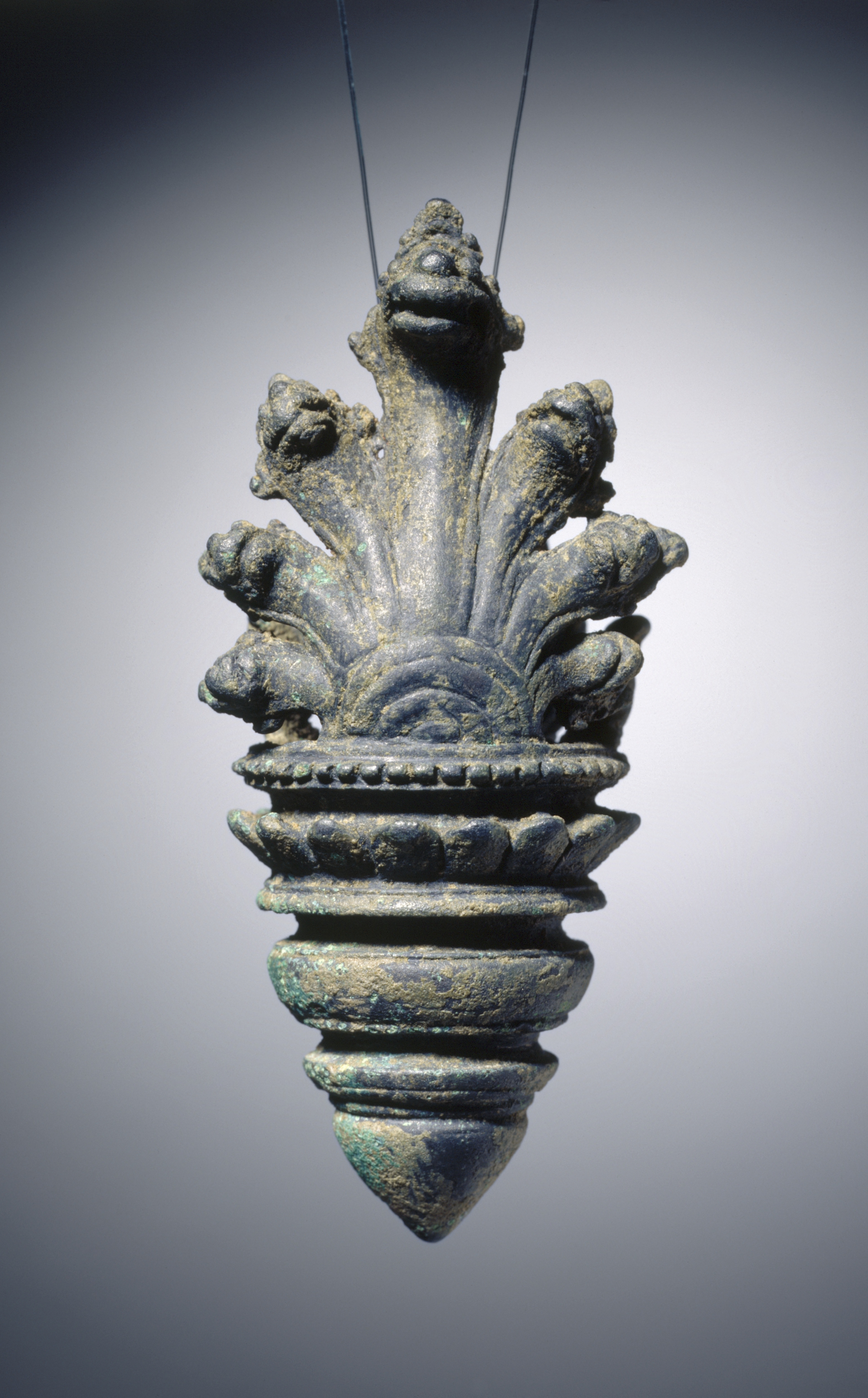The Cleveland Museum of Art
Collection Online as of April 25, 2024

Earring
c. 1100s–1200s
Location: not on view
Did You Know?
This earring is topped with the form of a naga, a water serpent with a multi-headed hood.Description
Earrings that were cast in bronze and then gilded (on this example, the gilding has worn off) were attached to the stone sculptures themselves. The serpent, a Khmer national emblem, was used frequently as an ornamental motif.The historical Buddha Shakyamuni was born a prince in northern India in the late 500s BC, and he wore heavy earrings that dragged down his earlobes. When he renounced worldly life to seek enlightenment, he cast off all his jewels. Generally, Buddha images have elongated earlobes without earrings, while bodhisattvas—beings close to full enlightenment—wear princely jewels in reference to Shakyamuni’s princely life just before he became a Buddha. By the early 1200s in Cambodia, however, these categories had become more nuanced: the bodhisattva Lokeshvara was viewed as such a potent figure he was sometimes called a Buddha and images of some special Buddhas other than Shakyamuni were distinguished by their jewelry.
- ?–1987(William H. Wolff [1906–1991], New York, NY, sold to the Cleveland Museum of Art)1987–The Cleveland Museum of Art, Cleveland, OH
- The Cleveland Museum of Art (10/14/2017-03/25/2018): "Beyond Angkor: Cambodian Sculpture from Banteay Chhmar"
- {{cite web|title=Earring|url=false|author=|year=c. 1100s–1200s|access-date=25 April 2024|publisher=Cleveland Museum of Art}}
Source URL:
https://www.clevelandart.org/art/1987.71